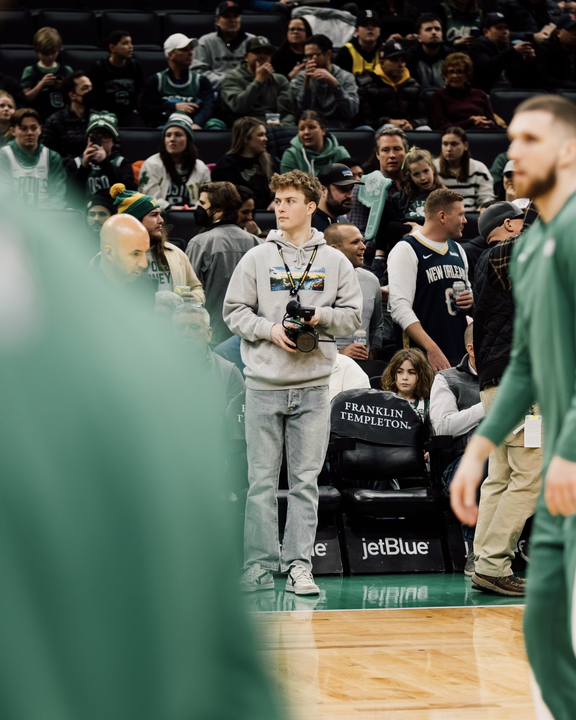On Jan. 8, baseball writers punched their tickets for Greg Maddux, Tom Glavine and Frank Thomas to be eternally enshrined at the National Baseball Hall of Fame in Cooperstown, N.Y.
There are no arguments against any of the inductees.
As members of the Atlanta Braves, Maddux and Glavine — the older brother of Northeastern head baseball coach Mike Glavine — were the cornerstones of one of the best pitching rotations in baseball history.
Each ace starting pitcher posted over 300 careers wins and earned run averages of 3.16 and 3.54, respectively, while pitching in the most offensively dominated era in the sport. Thomas is no slouch either. His career numbers include 521 home runs, a batting average of .301 and a .419 on-base percentage during his 19-year career in which he spent 14 seasons with the Chicago White Sox.
None of these players have any ties to performance-enhancing drugs.
This class of three represents a return to normalcy for baseball fans. In the 2013 Hall of Fame voting, no players appeared on the required 75 percent of ballots. So for the first time since 1996, former players were shut out by the voters.
There wasn’t a shortage of big names to choose from last year, either. Barry Bonds, Roger Clemens, Mark McGwire, Sammy Sosa and Mike Piazza all became eligible for the Hall and appeared on the Baseball Writers of America’s ballot for the first time since their respective retirements.
Before a grand jury in 2011, Bonds, testified that he used PEDs in 2003, believing them to be a flax seed oil and arthritis cream. In 2010, McGwire admitted to steroid use during his storied chase of Roger Maris’ home run record back in 1998. Clemens was tied to steroid use in Major League Baseball’s Mitchell Report in 2007, but has vehemently denied using PEDs. Sosa tested positive during an allegedly anonymous MLB survey test in 2003. There aren’t any tests tied to Piazza’s rumored steroid use, but he admitted use of amphetamines last spring and anecdotal evidence such as his acne-covered back during his playing days has swayed the court of public opinion against him, adding his name to a long list of alleged steroid-abusers.
These players’ ties to PEDs, real or assumed, kept voters from checking their names last week.
Baseball is a purist’s sport steeped in tradition and full of nostalgia. There is a sacred nature to baseball’s history books. While they may have been sullied by PED-using players in the 1990s, many Hall of Fame voters feel they are able to uphold baseball’s legacy by keeping these offenders out of Cooperstown. But with more steroid-era stars becoming ballot-eligible each year, voters are faced with the difficult task of assessing a player’s candidacy — not based on his body of work, but rather on the perception of his body.
Is preserving the sanctity of the Hall worth potentially omitting clean players that happened to take the field during an era of rampant PED use? It’s a moral dilemma.
The voting percentages seem to indicate some leniency towards players that haven’t been officially outed as steroid users. Bonds, Clemens, McGwire and Sosa all saw their popularity among voters decrease in their second year on the ballot, while Piazza appeared on 62.2 percent of voter submissions, up from his 2013 total of 57.8 percent. Over time, and even next January, he may garner enough support to be inducted.
If the sportswriters really wanted to make a statement in 2013 or 2014, they should have voted in Craig Biggio, the former Houston Astros utility man. He played 20 seasons for the same team, taking the field at five different positions during his career and amassing 3,060 hits, good for 21st all-time in Major League history. Biggio was a seven-time All-Star, five-time Silver Slugger award winner — one as a catcher, four as a second baseman — and a four-time Gold Glover at second base. He also interestingly holds the distinction of being the career leader in hit by pitches in the modern era.
Most importantly, he did it all without the body of a comic book hero.
Biggio appeared on 68.2 percent of ballots in 2013, and 74.8 percent this year, putting him 0.2 percent of votes shy of the 75-percent minimum needed to earn a place in Cooperstown. He will probably get voted in next year, but unlike Piazza, there’s no reason for him to sit in PED purgatory.
–Dylan Lewis can be reached at [email protected]













